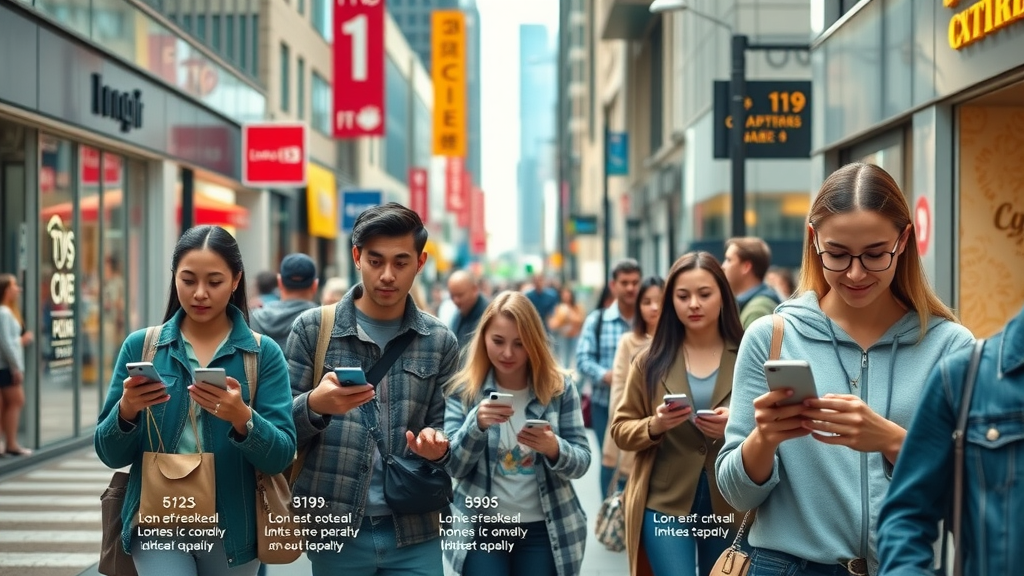Did you know 82% of smartphone shoppers conduct ‘near me’ searches, directly influencing where they buy and whom they trust? Businesses that implement robust local content marketing strategies consistently outperform those who don’t by capturing these high-intent shoppers right when they’re ready to act. If you’re ready to elevate your local business , dominate local searches, and turn your neighborhood into loyal fans, this guide breaks down proven, actionable methods tailored for local growth in 2024. Let’s uncover the insider secrets to building trust, community buzz, and unstoppable foot traffic through local content mastery.
Unlocking Growth: Surprising Facts About Local Content Marketing Strategies
- Did you know that 82% of smartphone shoppers conduct 'near me' searches? Discover how effective local content marketing strategies put your business at the top of those searches.

Why Local Content Marketing Strategies Matter for Every Local Business
- Explore real-world examples of local businesses increasing foot traffic and online engagement by targeting their local audience.
Whether you're a neighborhood boutique, a family-run coffee shop, or a service-based local business , your local content marketing strategies can be the difference between being discovered or overlooked. Businesses that harness the power of hyper-targeted content not only reach more potential customers but also build trust quickly within their community. For example, a local bakery that shares behind-the-scenes stories about sourcing ingredients from nearby farmers can forge deeper relationships and encourage word-of-mouth promotion.
Consider how one small bookstore hosted live readings, shared event recaps on their blog posts and social media, and saw a 40% increase in both online engagement and in-store visits. The power lies in understanding your local audience —creating content that speaks to their unique needs, celebrates local events, and highlights the essence of your neighborhood. In 2024, winning brands will blend creativity with analytics to truly own their local market.
Achieving Success With Local Content Marketing Strategies: Essential Foundations
- Defining local content marketing, understanding its unique approach for local businesses, and why a tailored content marketing strategy outperforms generic campaigns.
Understanding Local Content Marketing
- Key definitions, objectives, and the impact of local content marketing on small and medium-sized local businesses.

Local content marketing is the art and science of designing and sharing stories, resources, and information specifically for your community and neighborhood. Unlike broader campaigns, this approach tailors every piece of content marketing to reflect local values, holidays, dialects, and interests. Its main objective is to establish a trusted local presence, drive in-person engagement, and upswing in-store and digital conversions within your local area .
For small businesses, the impact is transformational. By focusing on the local audience, your brand can rank higher in local search results , become a go-to for local recommendations, and build trust through authenticity. Whether it’s a blog post about community success stories or guides spotlighting local landmarks, the idea is to craft content marketing that positions your business at the heart of local life—making it relevant, visible, and memorable to the people who matter most.
Key Components of a Winning Local Content Marketing Strategy
- Identifying your local audience
- Setting measurable marketing goals
- Leveraging local events
- Aligning content marketing with broader marketing efforts
"Content is fire; social media is gasoline." – Jay Baer
A successful local content marketing strategy hinges on clarity and alignment. Identifying your local audience ensures messaging connects with the people most likely to visit or recommend your business. Once you know your targets, set clear metrics—perhaps foot traffic, online bookings, or newsletter sign-ups—to track progress. Next, local events (from farmers' markets to community fundraisers) should consistently inspire content marketing strategy , making your brand a fixture in neighborhood conversations.
Finally, it’s vital that content marketing efforts synchronize with other promotional initiatives, such as email newsletters, in-store campaigns, and local partnerships. A holistic plan not only amplifies reach but creates a consistent story, which is key when nurturing potential customers from their first online search to their return in-store visit.
Researching Your Local Audience: The Core of Local Content Marketing Strategies
- Utilizing analytics to pinpoint your target audience, understanding local community needs, and segmenting audiences for personalized content marketing strategy.

To master local content marketing strategies , you first need to identify and deeply understand your target audience . Using analytics tools such as Google Analytics, you can monitor website visitors, track user behaviors, and determine which geo-locations drive the most interest. This insight allows you to craft messages that resonate with your local community and create offers that attract the right customers at the ideal time.
But data alone isn’t enough. Engage directly with your local community —whether through surveys, online polls, or face-to-face interactions—to learn about their pain points, values, and wishes. Segmenting your audience lets you deliver content marketing strategy tailored to different groups (e.g., families, college students, remote professionals), ensuring each piece of content feels personal and relevant. Effective research transforms every blog post , event recap, or testimonial highlight into a magnet for your best local customers.
Effective Tools for Local Audience Analysis
- Google Analytics
- Facebook Insights
- Survey methods (online surveys, in-person questionnaires, feedback forms)
Successful local businesses employ a suite of digital and analog tools for local audience analysis. Google Analytics helps you measure demographics, interests, and on-page activity, while Facebook Insights reveals which posts resonate with your social following. Additionally, running regular surveys—either online or at the point of sale—provides qualitative feedback you can’t get from dashboards alone.
These insights ensure your marketing strategy is rooted in data, not guesswork. Over time, tracking changes in user behavior and community preferences will keep your content marketing agile, timely, and targeted—crucial ingredients for achieving sustained growth in any local market.
Developing Content Marketing Strategy With Local Focus
- Differentiating content marketing from traditional advertising and building a strategy that resonates with your local community.
While traditional ads interrupt, content marketing attracts by providing real value. For local businesses , this means moving beyond broad promotions to share meaningful local stories, spotlight area heroes, or offer how-to guides specific to your local area . The most compelling content marketing strategies showcase your investment in the local community and invite locals to participate—fostering loyalty, trust, and repeat business.
For example, instead of simply promoting a product launch, you might create a behind-the-scenes video highlighting a partnership with a neighborhood artisan. Or, run a seasonal series on local trails, parks, or hidden gems, each connected to your brand’s values. These strategies not only differentiate you from national competitors but root your business in the neighborhood’s daily conversation and culture.
Content Types That Engage Local Audiences
- Localized blog posts
- Community stories
- Local event recaps
- How-to guides featuring local flavor
| Content Type | Example | Expected Engagement Level |
|---|---|---|
| Blog post | “Top 5 Hidden Neighborhood Coffee Shops” | High |
| Event Recap | “Highlights from the Main Street Art Festival” | Very High |
| Community Spotlight | “A Day in the Life of a Local Firefighter” | High |
| How-To Guide | “How to Plan the Perfect Picnic in Central Park” | Medium to High |
| Customer Testimonial Video | “Why Locals Love Our Pizza!” | Very High |

Integrating Local SEO Into Your Content Marketing Efforts
- Optimizing your website and blog with local keywords, leveraging Google My Business profile, and using location-based schema markup for enhanced search engine visibility.
No local content marketing strategy is complete without robust local SEO. By incorporating local keywords like "plumbing services in Austin" or "best coffee shop near Main Street" into your web content, you dramatically boost your chances of ranking in local search results . Beyond keyword placement, maintaining a comprehensive and verified Google My Business profile signals relevance and trust to both users and search engines.
Leverage location-based schema markup in your site’s code to help search engines contextualize your business and display rich information, such as ratings, business hours, or event schedules, directly in search results . This not only increases your visibility but also cements your brand as a central player in your local ecosystem—especially critical for converting high-intent local customers who rely on mobile and voice search for instant decisions.

How Local SEO Impacts Content Marketing Strategy
- Google's local ranking factors, citations, reviews, and proximity.
Local SEO directly influences the success of your content marketing. Google’s local ranking factors, including business proximity, citation accuracy, and positive reviews, all feed into your content’s discoverability and trustworthiness. A well-optimized business profile, with fresh content, accurate hours, and plenty of customer feedback, helps you appear higher on map packs and in local search results .
Furthermore, generating high-quality backlinks from respected local organizations, chambers of commerce, and local news sites amplifies your authority in the search engine’s eyes. Ultimately, integrated local SEO and content strategies work together to draw in potential customers who are ready to take action, whether it’s making a reservation, booking a service, or visiting your storefront.
Best Practices for Local Keywords Integration
- Selecting geo-targeted keywords
- Placement in headlines
- Natural usage throughout content marketing
"Successful content marketing happens when you stop writing about everything you do and start writing about how you help your local community." – Content Marketing Institute
Effective local keywords integration requires strategic planning and a natural touch. First, research which local phrases and terms your target audience actually uses; tools like Google Keyword Planner and SEMrush are invaluable for this. Next, embed these keywords in key areas—titles, meta descriptions, headers, image alt text, and the opening sentences of blog posts. Always use them naturally within your stories and not just for the sake of search engines.
By combining relevant local keywords with insightful, community-focused storytelling, you provide value to both human visitors and algorithms, ensuring your message rises above the noise and connects authentically with your local audience .
Harnessing Social Media for Local Content Marketing
- Platform-specific best practices (Facebook, Instagram, TikTok) for reaching a local audience and integrating local events into your social media plan.

Social media platforms are where modern local content marketing strategies truly come to life. Each major channel offers unique opportunities: Facebook enables local event promotions and community group engagement, while Instagram shines for sharing event recaps, behind-the-scenes looks, and interactive Stories. TikTok is rapidly becoming a go-to for local businesses looking to attract younger audiences through fun, authentic video storytelling that highlights their local flavor.
Consistency is key in social media. Develop a content calendar that incorporates community stories, live event streams, and seasonal highlights. Respond promptly to comments and messages to display excellent customer service and foster a dialogue. By regularly featuring your locale’s culture, landscapes, and business collaborations, you reveal your dedication to the local community and inspire others to join and share.
Local Social Media Campaign Ideas
- Promoting local event partnerships
- Behind-the-scenes local business highlights
- User-generated content reflecting local flavor
For outstanding social media impact, center campaigns around real community involvement. Promote partnerships with local events—such as sponsoring a local run or participating in a food festival—by creating unique hashtags and sharing live coverage. Give followers a glimpse into daily operations or introduce staff through “meet the team” posts, helping your target audience put faces to the name.
User-generated content is gold for local content marketing . Encourage customers to snap photos or videos during their visits, then feature their content on your profile (with permission). This not only widens your reach organically but breeds community pride and a sense of local ownership in your brand’s success.
Maximizing Marketing Efforts Through Local Events and Sponsorships
- How participating in community-based local events can elevate your content marketing efforts and strengthen ties with the local community.
Participation in local events isn’t just about visibility—it’s about woven integration into the fabric of your community. Whether you’re hosting booths at a seasonal fair, sponsoring a charitable cause, or being the headline partner at a popular festival, these efforts generate trust and brand recall.
By capturing event highlights, conversations, and testimonials, you can produce a steady stream of content for your blog posts , social feeds, and email newsletters—amplifying the impact far beyond event day. Local sponsorships additionally signal your commitment to community prosperity and create valuable backlinking opportunities for local SEO .
Turning Local Events Into Content Marketing Gold
- Live blogging local festivals with real-time photos and updates
- Event recaps shared via blog posts, email, and social channels
- Exclusive interviews with community leaders or participants
- Visual storytelling through highlight reels and customer testimonials

From pre-event teasers to post-event highlight videos, local happenings provide a wealth of creative material. By telling the stories behind the scenes and profiling the attendees, your business comes across as engaged and deeply connected—not just a bystander. Repurposing this content throughout the year sustains buzz and keeps your marketing narrative relevant and community-based.
Optimizing For Search Engines: Advanced Tactics for Local Content Marketing Strategies
- Deep dive into technical SEO for local businesses, optimizing internal linking, mobile performance, and local backlinks for content marketing.
Beyond on-page optimization, advanced technical SEO tactics drive local content marketing strategies to the next level. Start by auditing your website’s internal linking structure—locally relevant pages should link to one another, ensuring that customers and search engines alike can easily find all your community-centric content. Prioritize page speed and responsiveness, since your potential customers will frequently access your content on mobile devices while on-the-go.
Work on building quality local backlinks. Forge partnerships with neighborhood bloggers, business associations, and community news outlets, so they link to your events, blog posts, or resource pages. This not only signals to search engines that yours is an authority in the area but also drives highly-targeted referral traffic directly from those invested in your city or town.
Schema Markup and Local Business Profiles
- Structured data tips for highlighting your local business, products, and services to search engines.
Implementing schema markup is essential for local businesses wanting to stand out in search results. This code helps Google and other search engines read, interpret, and display vital info—like reviews, location, hours, event dates, and even menus—directly in the results page. Schema markup is particularly useful for getting your site into Google’s local packs or rich snippet placements, putting you ahead of less-optimized competitors.
Keep your business profiles up-to-date across all directories (like Yelp, Bing Places, and Google My Business) with accurate name, address, phone (NAP), and website links. A consistent digital footprint helps both customers and algorithms find and trust your brand, ultimately driving conversions from online curiosity to in-person visits.
Building Local Backlinks for Content Marketing Success
- Connect and collaborate with other local businesses and organizations.

One of the fastest ways to boost your content’s authority and ranking potential is through robust local backlinking. Establish relationships with area nonprofits, schools, and small businesses by sponsoring events, guest posting, or running collaborative campaigns. Each new backlink from a .edu, .gov, or respected local domain signals additional credibility to search engines.
Don’t neglect opportunities to appear in local guides, “best of” roundup blog posts, and community business directories. Each digital reference strengthens your position online and off, supporting all other content marketing and SEO initiatives.
Measuring Success: KPIs for Local Content Marketing Strategies
- Traffic, local search rankings, engagement, lead generation, and conversion rates as primary key performance indicators for content marketing.
It's crucial to track clear KPIs for your local content marketing strategies . Start with overall website traffic, broken down by local vs. non-local visitors. Monitor your ranking progress in local search and follow engagement on your blog posts and social channels (likes, comments, shares). Track leads generated—such as calls, bookings, and newsletter signups—and ultimately conversions like in-store visits or product sales.
Over time, this data provides a feedback loop, allowing you to double down on successful tactics and phase out underperforming ideas. Keeping a pulse on these numbers ensures your marketing remains relevant, cost-effective, and primed for ongoing growth.
Tools and Techniques for Tracking Content Marketing Performance
- Use of Google Analytics, Google My Business Insights, and social media metrics dashboards.

There are robust tools available to help quantify the impact of your marketing efforts. Google Analytics offers granular data on acquisition sources, audience geo-location, and top-converting content. Google My Business Insights reveals how customers find your profile, what actions they take, and where they’re coming from in your local area .
Social media networks provide their own analytics, allowing you to drill down into what content types (videos, event highlights, blog links) drive the most interactions. Combine these reports for a holistic view, and regularly tweak your approach to reflect what’s working best for your business and community.
Adapting and Scaling Local Content Marketing Strategies
- Iterating your marketing strategy through testing, collecting feedback from your local audience, and scaling successful tactics to new markets.
The highest-performing local content marketing strategies evolve. Begin by testing various formats—event recaps, customer spotlights, live Q&As—to determine what resonates best with your local audience . Encourage ongoing feedback via digital forms or direct outreach and don’t be afraid to pivot quickly based on what you learn.
Once you’ve refined a winning formula, scale your approach to adjacent neighborhoods or similar communities. The core principles—community-first storytelling, integrated local SEO, and authentic engagement—will translate, but always re-research unique needs and preferences as you expand.
Learning from Local Content Marketing Case Studies
- Highlighting small business success, challenges, and lessons in local marketing.

Studying real-world examples is invaluable. For instance, a small bike shop increased foot traffic by 60% by launching a series of hyperlocal blog posts highlighting nearby bike paths and customer journeys. Another small business, a florist, boosted Instagram engagement by sharing flower arrangement tutorials tied to local festivals. Each faced initial hurdles—such as low response rates or slow initial traction—but overcame them by doubling down on community collaboration and optimizing keyword strategies over time.
Key lessons include staying flexible, always listening to your local audience , and allowing authentic stories to drive the direction of content. Success, especially for small businesses, rarely happens overnight, but those committed to continuous improvement and genuine community connection invariably come out on top.
Expert Insights: Quotes on Local Content Marketing Strategies
"Local content marketing strategies are the backbone of sustainable local business growth." – Neil Patel
Top 5 Actionable Local Content Marketing Strategies for Businesses
- Hyperlocal blog content
- Collaborations with local influencers
- Video storytelling featuring your local community
- Geo-targeted email campaigns
- User-generated content contests
Set your business apart with these proven tactics. Hyperlocal blog content targets keywords and stories unique to your city or neighborhood. Partner with local influencers to amplify reach, build trust, and access previously untapped audiences. Video testimonials and mini-documentaries increase engagement and help your business stand out on visually driven social platforms.
Don’t overlook targeted email campaigns that offer special deals based on subscriber location. Launch user-generated content contests to foster brand loyalty and amplify your reach through authentic customer voices.
Common Pitfalls in Local Content Marketing and How to Avoid Them
- Ignoring local SEO
- Inconsistent branding
- Not monitoring analytics
- Overlooking local audience feedback
Many businesses fall into the trap of broad, generic messaging or overlook the power of strong local SEO. It’s crucial to maintain consistent branding—in tone, visuals, and values—across every marketing channel. Regularly review performance analytics to ensure your strategy remains effective, and always act on feedback from your local audience for continuous improvement.
Frequently Asked: Local Content Marketing Strategies
What is local content marketing?
- Local content marketing is the practice of creating and distributing content designed to engage, attract, and convert audiences specifically within a defined local geographic area. It focuses on tailoring marketing efforts to the needs and interests of local audiences.
What is the 70 20 10 rule in content marketing?
- The 70-20-10 rule means: 70% of your content should be valuable and relevant to your main audience, 20% should be shared or curated content, and 10% should be experimental or promotional.
What type of content works best for local marketing?
- Top-performing local marketing content includes local event coverage, community stories, business spotlights, testimonial videos, FAQs, and local SEO-focused blog posts.
What are the 3 C's of content marketing?
- The three C’s are: Content, Context, and Community. Strong content is the foundation, context ensures it resonates locally, and building a community keeps local audiences engaged.
Key Takeaways for Implementing Local Content Marketing Strategies
- Prioritize local audience needs, leverage local SEO, experiment with different content types, consistently track outcomes, and adapt your marketing strategy for maximum impact.

Ready to Transform Your Business With Local Content Marketing Strategies?
- Supercharge your local business with proven local content marketing strategies—start today! Contact our experts for a custom content marketing strategy designed to accelerate your local growth.
 Add Row
Add Row  Add
Add 




Write A Comment